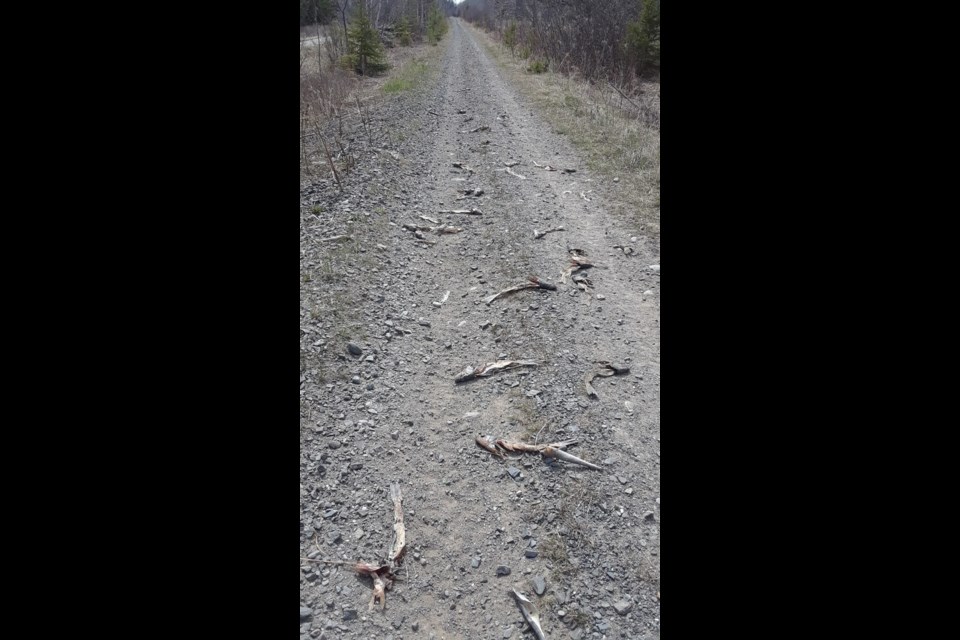THUNDER BAY — A significant quantity of filleted pickerel scrap discarded along the old CN railroad track near Lakeshore Drive is raising concerns about waste, wildlife, and potential violations of provincial fishing regulations.
“I walk a lot, and I live near Grandview Beach,” said the area resident who discovered the fish but did not want to be named.
“On my way back from a stroll along the old CN rail bed, I stumbled across the fish ... an estimated 75 fish littered across the area, with 28 found directly on the rail bed and a large pile just off to the side," he told Newswatch.
The filleted pickerel, or walleye, were left with only their heads, tails, and empty bodies behind. “They hadn’t been there long; I walked that same route about five days ago. But judging by the number of flies buzzing around the large pile, I’d say they were relatively fresh.”
“Aside from the unpleasant sight, my primary worry is the lack of food for bears at this time of year,” the resident continued. “It’s quite unattractive.”
Exposed fish waste can draw in scavengers like bears, raccoons, foxes, coyotes, and birds of prey, raising the risk of dangerous human-wildlife interactions in populated areas, he said.
He hopes to see further action to prevent such incidents in the future and protect both local wildlife and community members.
The Ministry of Natural Resources has been notified, and confirmed that there is an ongoing investigation.
The number of disposed fish is a cause for concern said Darrell Splett of North Superior Outfitters.
“Seventy-five fish? That’s unacceptable. You shouldn’t leave them anywhere people are likely to walk around.” He also mentioned that many times he uses the fish remains for bear baiting, highlighting another practical and responsible use of the waste.
In the Thunder Bay region, open season for walleye and sauger runs from January 1 to March 1 and resumes on the third Saturday in May through December 31.
During the regulated season in Zone 6 (inland lakes, Thunder Bay), anglers with a Sport Fishing Licence are permitted to catch and possess up to four fish. Those with a Conservation Licence are limited to two fish. All fish must be no longer than 46 cm.
In Zone 9 (Lake Superior north of the border), the season dates remain the same as zone 6. Anglers with a Sport Fishing Licence may catch and possess up to two fish, while those with a Conservation Licence are limited to one fish. There is no size restriction in this zone.
Beyond adhering to catch limits, anglers are also responsible for the proper disposal of fish remains.
“I either dispose of them in water that's deeper than 50 ft, or put them on an opposite shore from the cabins where the birds will get them quickly," said Splett.
Alternatively, burying waste at least 30 meters away from any water source is advisable, he said.
This incident coincided with the start of Ontario's regulated walleye season.
The MNR is encouraging all anglers respect all fishing regulations and to properly dispose of fish waste.
Graham Dunvill, area enforcement manager and staff sergeant with the MNR, says to properly dispose "avoid, roads and ditches, public trails, parking areas, populated areas, and private land not owned by the individual or without permission of the owner"
